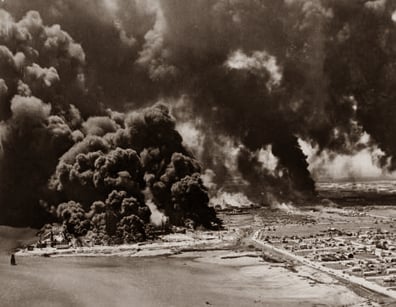 This past weekend marked the 70th anniversary of the deadliest industrial explosion in the United States, and it’s worth taking time to remember those killed and injured and to pay attention to the safety changes that were instituted because of this event.
This past weekend marked the 70th anniversary of the deadliest industrial explosion in the United States, and it’s worth taking time to remember those killed and injured and to pay attention to the safety changes that were instituted because of this event.
On the morning of April 16, 1947 a fire broke out on the deck of the freighter S.S. Grandcamp while it was docked in Texas City. Human curiosity brought onlookers to the shore, where they crowded to watch the burning freighter. Unfortunately, the flames spread out of control and reached the ship’s main cargo of 2,200 tons of ammonia nitrate, which is used as a fertilizer but is highly explosive.
The blast from the exploding ammonia nitrate leveled more than 1000 surrounding buildings, shattered windows 40 miles away, could be felt 250 miles away, and was picked up on a seismograph 900 miles away.
Due to the burning ammonia nitrate, the clouds from the fire were bright orange, bringing crowds of people to view the exploded and burning ship, but 15 hours after the initial explosion the fire spread to another ship carrying ammonia nitrate, the S.S. High Flyer, which then exploded and sent shrapnel flying into the destroyed town.
The multiple explosions killed 576 people, and injured more than three thousand others. Emergency staff from neighboring areas came to the area to help with disaster relief efforts, and most of the survivors left the town to try and rebuild in Houston. Over 3,000 lawsuits were brought against the federal government because the ships had been filled at U.S. ordinance plants. These lawsuits were eventually settled for $16.5 million.
New safety regulations about the manufacture, shipping, and storage of chemicals and explosive materials were created immediately after this industrial explosion, and luckily this scale of an industrial disaster has never been seen again and hopefully never will be seen again. This was a time before OSHA or the EPA, which now inspects and oversees to make sure the possibility for these disasters is nullified.

